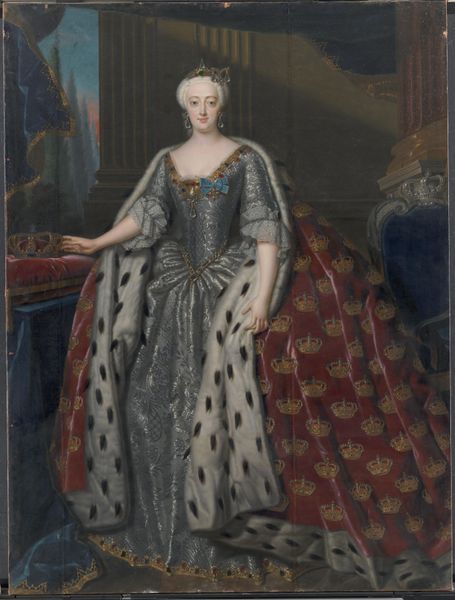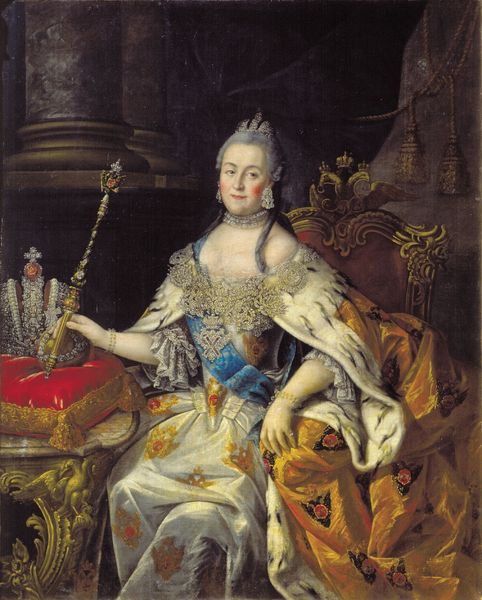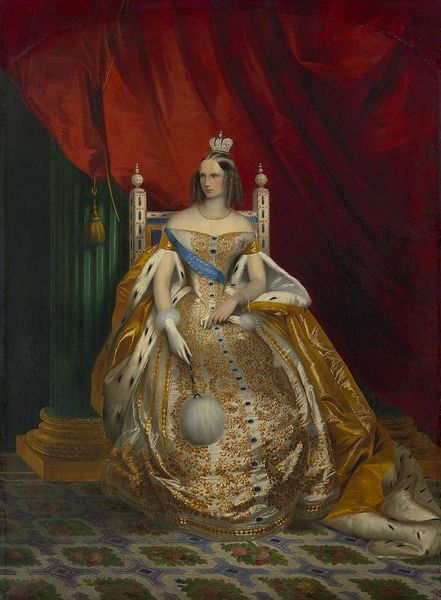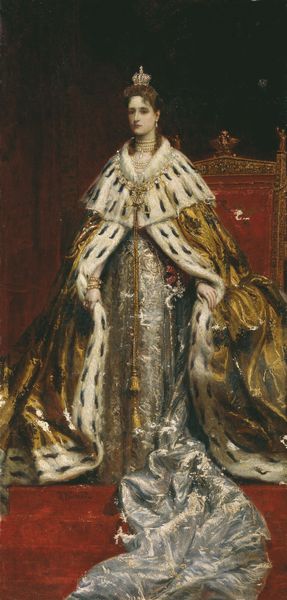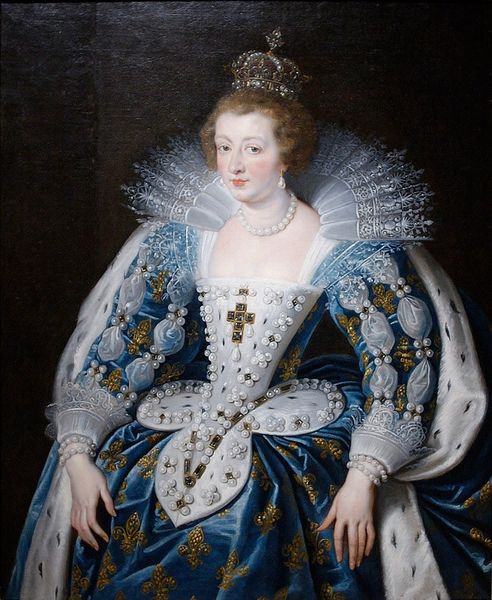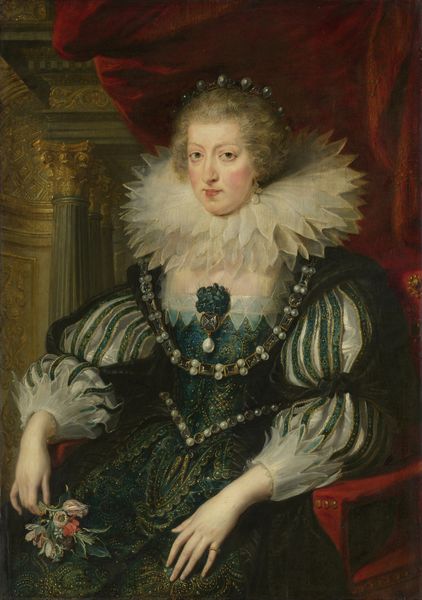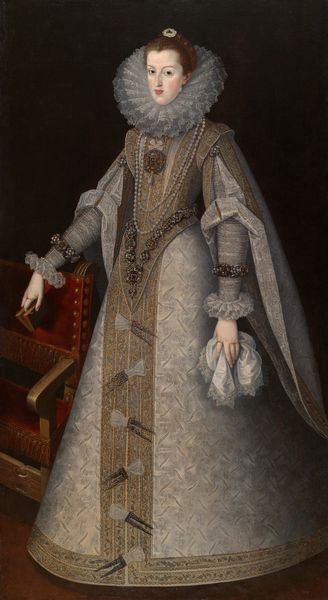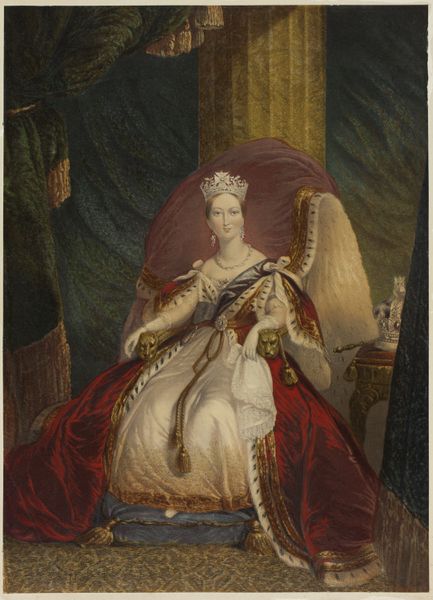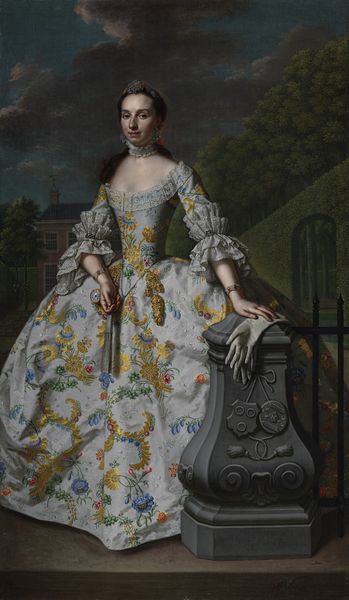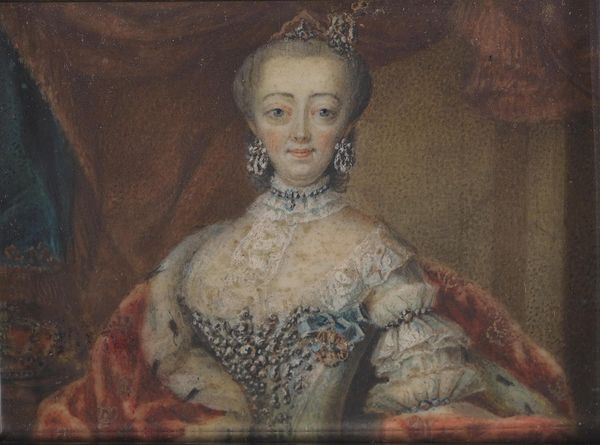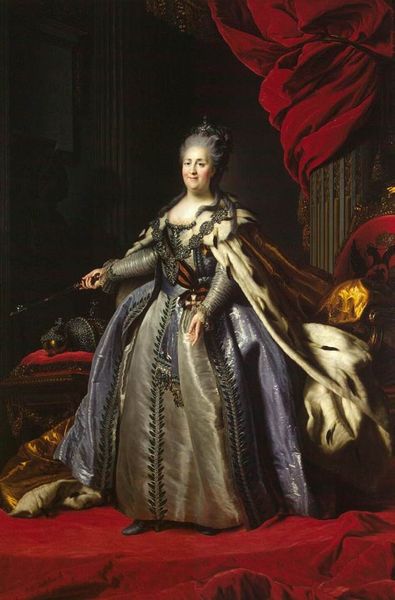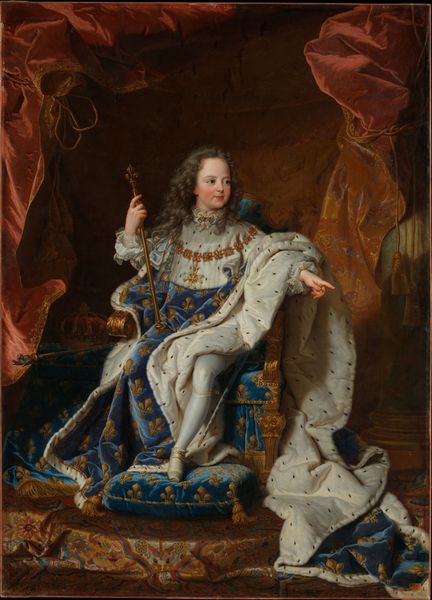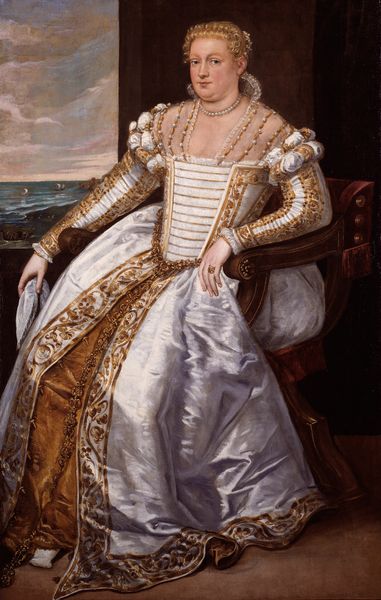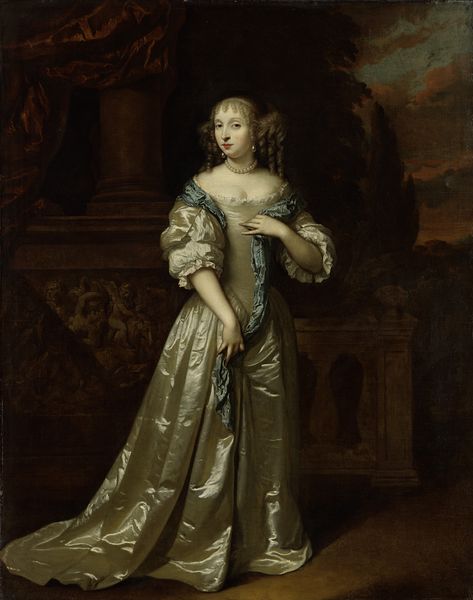
Portrait of Marie de Médicis (1575-1642), Queen of France, in Robes of State c. 1610
0:00
0:00
painting, oil-paint
#
portrait
#
baroque
#
painting
#
oil-paint
#
history-painting
#
academic-art
Dimensions: support height 282 cm, support width 215 cm, outer size depth 9 cm
Copyright: Rijks Museum: Open Domain
Curator: Look at her; she exudes such a regal confidence, don’t you think? We’re looking at Frans Pourbus the Younger's depiction of Marie de Médicis, painted around 1610, currently residing at the Rijksmuseum. Editor: Wow, all that opulence. She looks, frankly, a bit trapped under all that fabric, almost like a walking monument! The fleur-de-lis pattern—isn’t it slightly overwhelming? Curator: Precisely. The excess is the point. Pourbus’s Baroque style captures her power. The French monarchy, rife with conflict and courtly dramas. Marie, as queen consort and then regent, navigates all these choppy political waters, you see, and so the robes, that is how power dressed then. Think about the symbolic load. Editor: It’s less an outfit, more like gilded armor! But, tell me, doesn't she have agency beyond just "dressing the part"? I find her gaze surprisingly… direct. It almost pierces through all the finery. Curator: It does. It disrupts that reading, doesn't it? And, she uses those signifiers—the dress, crown—as instruments. We're invited to see the relationship between sovereignty, spectacle, and, importantly, gender. Consider the moment. She assumes regency for her young son, Louis XIII. It becomes less about adornment and more about staking a claim. Editor: It's power-dressing as a declaration, right? Almost as if to say, “I am France, right now." Makes you think about the contemporary resonances – the burden and the stage of it all. Curator: Yes! We have to question how these paintings reinforce notions of power and feminine leadership. There's so much we unpack even today! Editor: Right! It's almost unnerving to think what's been going on with women at helm back then to contemporary scenarios when power it is at stake; it never gets old or dull to bring these figures to life by analyzing how relevant they are. It makes her presence more real; more contemporary; more human!
Comments
No comments
Be the first to comment and join the conversation on the ultimate creative platform.
